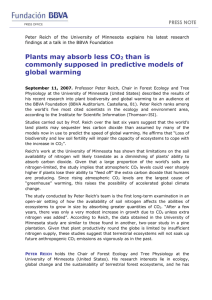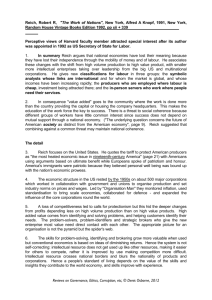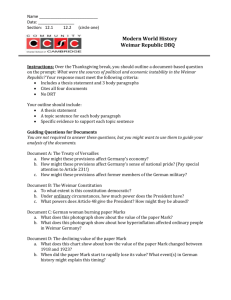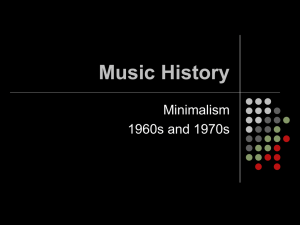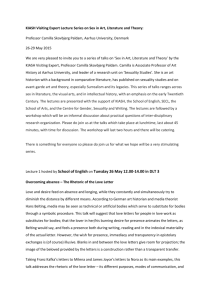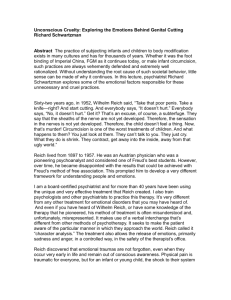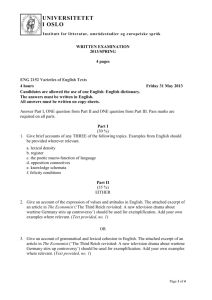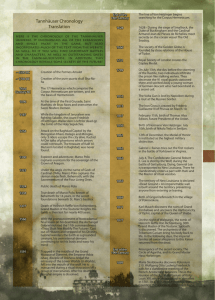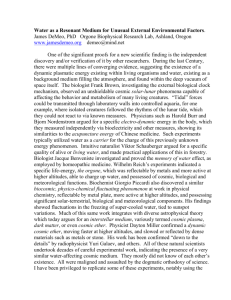The Work of Nations
advertisement
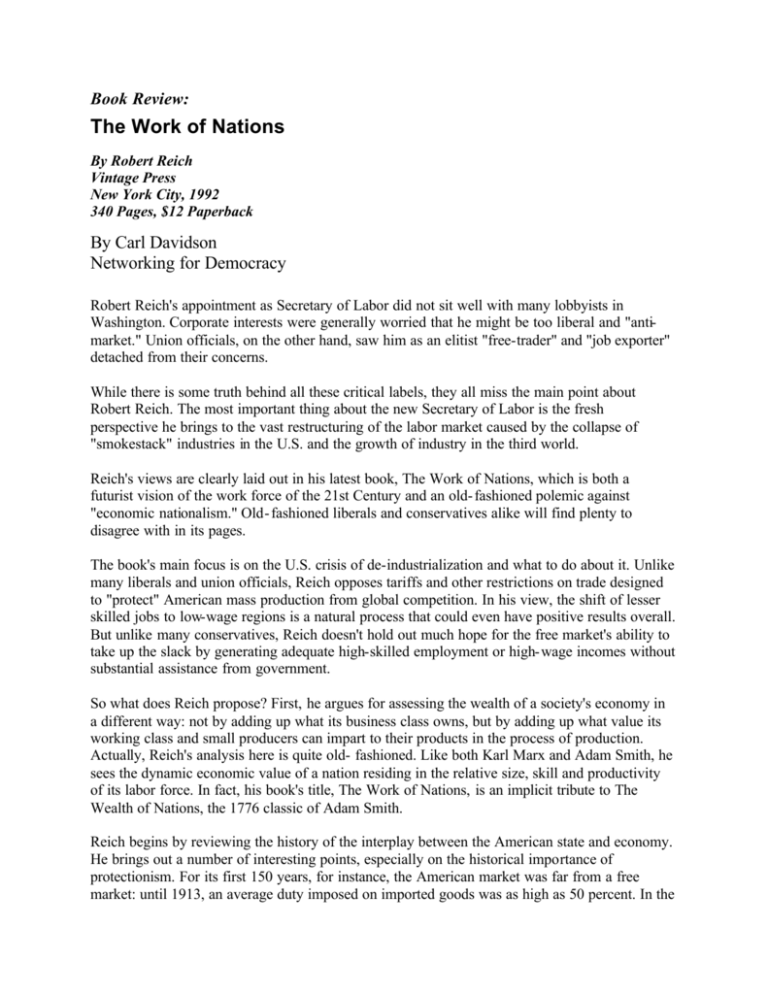
Book Review: The Work of Nations By Robert Reich Vintage Press New York City, 1992 340 Pages, $12 Paperback By Carl Davidson Networking for Democracy Robert Reich's appointment as Secretary of Labor did not sit well with many lobbyists in Washington. Corporate interests were generally worried that he might be too liberal and "antimarket." Union officials, on the other hand, saw him as an elitist "free-trader" and "job exporter" detached from their concerns. While there is some truth behind all these critical labels, they all miss the main point about Robert Reich. The most important thing about the new Secretary of Labor is the fresh perspective he brings to the vast restructuring of the labor market caused by the collapse of "smokestack" industries in the U.S. and the growth of industry in the third world. Reich's views are clearly laid out in his latest book, The Work of Nations, which is both a futurist vision of the work force of the 21st Century and an old- fashioned polemic against "economic nationalism." Old- fashioned liberals and conservatives alike will find plenty to disagree with in its pages. The book's main focus is on the U.S. crisis of de-industrialization and what to do about it. Unlike many liberals and union officials, Reich opposes tariffs and other restrictions on trade designed to "protect" American mass production from global competition. In his view, the shift of lesser skilled jobs to low-wage regions is a natural process that could even have positive results overall. But unlike many conservatives, Reich doesn't hold out much hope for the free market's ability to take up the slack by generating adequate high-skilled employment or high- wage incomes without substantial assistance from government. So what does Reich propose? First, he argues for assessing the wealth of a society's economy in a different way: not by adding up what its business class owns, but by adding up what value its working class and small producers can impart to their products in the process of production. Actually, Reich's analysis here is quite old- fashioned. Like both Karl Marx and Adam Smith, he sees the dynamic economic value of a nation residing in the relative size, skill and productivity of its labor force. In fact, his book's title, The Work of Nations, is an implicit tribute to The Wealth of Nations, the 1776 classic of Adam Smith. Reich begins by reviewing the history of the interplay between the American state and economy. He brings out a number of interesting points, especially on the historical importance of protectionism. For its first 150 years, for instance, the American market was far from a free market: until 1913, an average duty imposed on imported goods was as high as 50 percent. In the early 20th Century, he also shows how anti- trust legislation, intended to promote competition among these home-grown, hot-house capitalists, in fact promoted the growth of large corporations that swallowed their competitors and restricted competition. Massive corporations grew in tandem with the techniques of a mass production where products were standardized for a mass market. The mass market in turn required a mass culture of consumption. According to Reich: "Americans took it as their patriotic duty to consume, and understood the purpose of the American economy as enabling them to do so. `Economic salvation, both national and personal, has nothing to do with pinching pennies,' declared a 1953 advertisement for Gimbels, the New York department store. `Economic survival depends on consumption. If you want to have more cake tomorrow, you have to eat more cake today. The more you consume, the more you'll have, quicker." Mass production, however, had an important impact on the character of the work force. On one hand, American workers were more productive than ever; on the other hand, their skills had declined relative to their forerunners in the craft unions. Reich shows how the mass production industries today are still seeking out the low-wage, unskilled and semi-skilled work force. Only now they do it on a global scale, often finding it easier to export the factories rather than import the workers. Here is where Reich raises a critical question. Does the future of the American economy reside in competing with the third world in order to retain relatively low skill and low wage manufacturing jobs within the borders of the U.S.? Reich doesn't believe there are any winners in this kind of competition: not American consumers, for whom protected trade means higher prices; not the unemployed in the third world, for whom fewer new factories means semistarvation; not even, in the long run, for the unskilled in the U.S., who are losing their jobs to automated machinery anyway. Protectionism in a global market, moreover, simply doesn't work anymore. Too many products and too many companies no longer have a distinct or single nationality. If one wants to buy a car made mainly by American labor, one would do better purchasing a Honda from Ohio than almost any Chrysler vehicle made anywhere. What is an "American" company, Reich asks, in a global web where by 1990 "Chrysler owned 12 percent of Mitsubishi...Ford owned 25 percent of Mazda...[and] General Motors bought more than 40 percent of Isuzu?" Reich makes a convincing case that it is both impossible and reactionary to try to prevent the globalization of the market. Instead, he poses a strategic question: Rather than trying to prevent low-wage, low-skill jobs from leaving the U.S., why don't we try a policy that would encourage high-wage, high-skill jobs to come into the U.S., regardless of the nationalities of the investors? It's an important point--Reich identifies the process as shifting from "high volume" production to "high value" production. It is especially crucial, he adds, because new job creation is not going to come from the corporate giants of the past. "America's 500 largest industrial companies," he explains, "failed to create a single net new job between 1975 and 1990, their share of the civilian labor force dropping from 17 percent to less than 10 percent. Meanwhile, after decades of decline, the number of people describing themselves as `self-employed' began to rise. And there has been an explosion in the number of new businesses." High value businesses, according to Reich, are those which: 1) solve proble ms by putting things together in unique ways, 2) help customers understand their needs and how to meet them with customized solutions, and 3) have the ability to link problem- identifiers with problem-solvers. While these criteria span a wide range of enterprises, Reich mainly means the design and engineering, research and development, education and communication, and marketing and management industries In this context, Reich introduces the best-known features of his book: his description of the "three jobs of the future"--routine production services, in-person services, and symbolic-analytic services. The routine producers are a shrinking percentage of the work force: about 25% in 1990. Those working with metal products were mainly white and male; those working with fabric, circuit boards or information were mainly minority and female. This sector is in sharpest competition with workers in the third world. The in-person servers are a growing sector; they comprised about 30 percent of the labor force in 1990. From fast food restaurants to nursing homes and janitorial service firms, they work alone or in small teams. The companies can be still be quite large: Beverly Enterprises, the nursing home giant, employs 115,000 workers, the same as Chrysler. Since the y have to provide services "in person," they face little global competition. But since their work often requires a pleasant, nurturing demeanor, women predominate. The symbolic analysts are a new and growing sector, but not nearly as large as the others. These are the university-trained "knowledge workers" who manipulate symbols for a living. They amounts to no than 20 percent at present; most are white males. For reason he doesn't make clear, Reich intentional leaves out quite a few others types of work from this analysis. Excluded are all "resource extractors"--farmers, miners, forestry workers--and all government employees, including teachers. But the apples of his eye are the symbolic analysts, who he views as central to generating new wealth and new forms of wealth. "In the high- value enterprise," Reich explains, "only one asset grows more valuable as it is used: the problem-solving, - identifying, and brokering skills of key people. Unlike machinery that gradually wears out, raw materials that become depleted, patents and copyrights that grow obsolete, and trademarks that lose their ability to comfort, the skills and insights that come from discovering new linkages between technologies and needs actually increase with practice.... Human capital operates according to a different principle. Because people learn through practice, the value of what they do usually increases as they gain experience." The Secretary of Labor is quick to point out that these workers did not pop up out of nowhere. Rather, they were largely the product of an industrial policy of the military type: "Through the postwar era, the Pentagon has quietly been in charge of helping American corporations move ahead with technologies like jet engines, airframes, transistors, integrated circuits, new materials, lasers, and optic fibers. This tactic, however benign, industrial policy accelerated under the Reagan administration, as America's military buildup proceeded apace." Reich is suggesting that if the country could benefit, even if only from secondary spin-offs, from an industrial policy driven by the Pentagon, why couldn't it do even better with an industrial policy driven by, say, the Department of Education. He state his central thesis succinctly: "Government policy makers should be less interested in helping American- owned companies earn hefty profits from new technologies than in helping Americans become technologically sophisticated." Many trade unionists had reservations about Reich partly because he lacked any record of prolabor advocacy or any direct experience with the problems of the working class. After all, he was a Harvard professor from a Republican, pro-business family. Yet another way to view Reich is as an emerging spokesman for the knowledge worker, whom he praises lavishly: "Never before in history has opulence on such a scale been gained by people who have earned it, and done so legally." Reich claims that the country already knows how to create a new wave of symbolic analysts. He asserts that our major universities are among the best in the world, drawing students from all across the globe. As for our secondary schools, he makes the following observation: "But some American children--no more than 15 to 20 percent--are being perfectly prepared for a lifetime of symbolic-analytic work...The formal education of an incipient symbolic analyst thus entails refining four basic skills: abstraction, system thinking, experimentation, and collaboration." But there is at least one worm in this apple. While theoretically all Americans could become symbolic analysts in a new global division of labor, in practice they will not. First of all, the new jobs being created in this sector are small relative to the job stagnation or loss in other sectors. There aren't enough of these jobs to go around, at least not yet. Second, even if there were enough jobs waiting to be filled, could a large majority, if not all, of our present schools educate the workers to fill them? Not with the savage inequalities in our current school system. Even Reich is not unaware on the problem. Lamenting the crisis in public education, he even offers a wish list of what would be needed for all of us to become symbolic analysts: "It would require early intervention to ensure the nutrition and health of small children and enroll them in stimulating pre-school programs...excellent public schools in every city and region and ample financial help to young people who wanted to attend college...substantial additional investments in universities, research parks, airports and other facilities conducive to symbolicanalytic work.... Finally, sufficient on-the job training..." Reich's tone here is one of "don't hold your breath," and towards the end of his book, he becomes pessimistic. He sees the main trend among the "fortunate fifth"-- his knowledge worker constituency--as one of being overwhelmed by a selfishness disconnected from any social responsibility beyond its own narrow circles. As for the other sectors of the labor force, he sees them primarily as passive victims or as resources to be mobilized for narrow, nationalistic and backward causes. He concludes simply with a moral appeal for everyone to become community spirited and do the right thing. In the end, Reich's book reveals two things about the top policy makers of the Clinton administration. The first is that they are smart enough to realize the true depth of the crisis of latter-day capitalism. The second is that they lack the courage and the vision to mobilize the main victims of the established order. That task--carrying the required radical reconstruction of society through to the end--remains for more capable hands.
